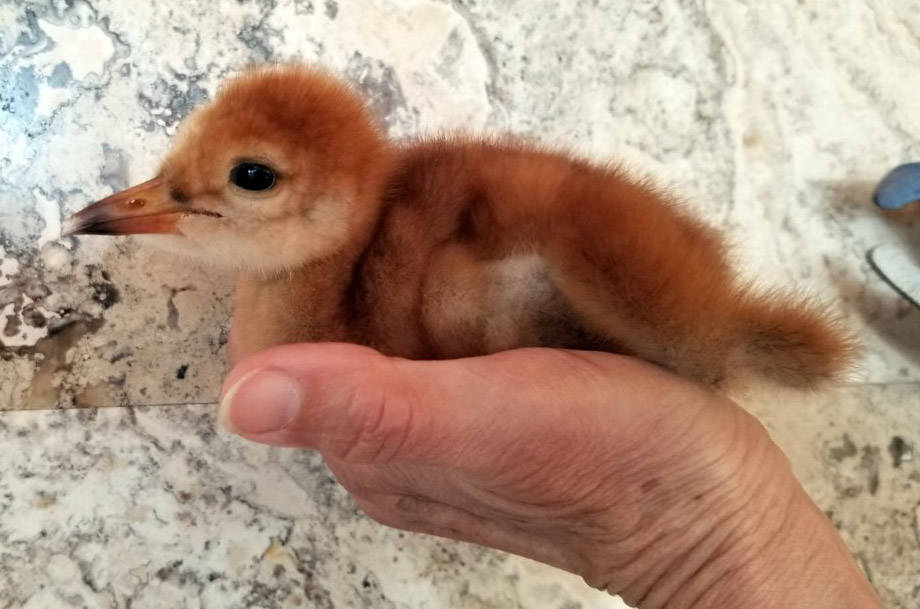For many, summer in Alaska is signified by lupine in full bloom and the bugs coming out in force. The abundance of insects is also why birds migrated thousands of miles to nest in Alaska.
Long daylight hours and the ability to feed growing offspring for 15 to 16 hours per day make Alaska a favorable spot to raise young. For folks in the wildlife field, this is a busy time when people rescue birds that cannot fly and seem injured.
For us here on the Kenai Peninsula, Marianne Clark is the only federally permitted bird rehabilitator. Marianne is a very dedicated and experienced rehabber, but the work is strictly voluntary.
She receives no compensation for the birds she cares for and often relies heavily on donations for food and equipment needed to care for our injured feathered friends. Unfortunately, Marianne is also just one person and cannot care for or respond to the volume of concerned calls we receive.
With the limitations of what one person can accomplish, we have to do our best to only utilize Marianne when real help is needed. If she can focus on birds that are truly injured or abandoned, this would be a greater service to all.
I want to relay a story that happened this past weekend, as I believe it may be one of the best examples of a successful bird rescue call. A concerned citizen called after finding an abandoned sandhill crane chick on a trail near a swamp.
There were no parents visible, and they were concerned the chick would starve or get killed by a dog, so they gathered it up and brought it home. The key point in the story was they called us after they got home, asking what to do.
While my response was probably not what they were expecting, they realized from our conversation that this bird was not in distress but going through a normal process.
Many bird species go through a period that bird rehabilitators call “being grounded.” They are developing and yet not quite ready for flight. Ground nesting birds often leave the nest as soon as possible.
They have just spent several weeks stinking up that one spot with hatching, feeding chicks, and chicks defecating. Predators can key in on those smells and locate a nest and food.
So, they leave the nest behind and explore. The parents come back after food gathering, find the chicks and feed them.
After sharing this information, the concerned caller understood the process and that the best outcome for this chick was to take it back to where it was found and have faith that the parents will continue to come back and look for it for a few days.
They returned the chick, and when they got back to the spot, both crane parents were standing there waiting. They dropped the chick on the ground, and it ran straight to the parents.
The birds greeted each other and wandered away united again. The caller relayed the success to me and was so happy that we could resolve the situation without having to raise the chick, teach it to fly and then get it to migrate south.
When we see a young bird or animal alone, we often see it as a baby. However, wildlife develop quicker and are on their own sooner. So what we see as a baby life stage is more equivalent to a teenager, a young bird that is quite literally almost ready to leave the nest.
In a rehabilitation scenario, the chance of success in a case like this is probably less than 5%. Secondarily, birds are protected, and it is against the law to take in and hold a migratory bird unless you are transferring it to a permitted rehabilitator.
Similar stories turn up each day, in a place like the Kenai, where people share the same landscape with wildlife. The next one that is an interesting example was a Wilson’s snipe that couldn’t fly and had a broken leg.
After retrieving the bird from the concerned citizen who rescued it and called us for assistance, even I was duped by its behavior of extending its leg out and dragging it to appear injured.
The next day when left alone, it was walking around normally on the “broken” leg, but when approached, it went immediately back to, “I’m injured, don’t touch me.” The best response is to stand back and watch, confirm an injury, or see if the bird is instead utilizing a normal survival strategy.
Back to our original story, as concerned citizens in our shared environment, the best thing we can do is call before we pick up any injured birds. In doing so, we can save many more birds and ensure that the minimal resources we have are dedicated to truly injured birds.
If the bird is in a safe place, simply watch it from a distance for a while before you call. Often an eagle just ate too much food or tweaked a wing in a fight with another eagle, and that is why it is sitting in your yard resting.
If you see a bird with an obvious injury, please call the refuge at 907-262-7021. We will do our best to discuss what you are seeing and determine the best resolution to the situation. However, we ask that you understand that we may not always have the resources to respond immediately. If you would like to help support Marianne, call Todd at 907-398-9553, and we will connect you.
Todd Eskelin is a Wildlife Biologist at Kenai National Wildlife Refuge. Find more Refuge Notebook articles (1999-present) at https://www.fws.gov/Refuge/Kenai/community/Refuge_notebook.html or other info at http://www.facebook.com/kenainationalwildliferefuge.
By TODD ESKELIN and MARIANNE CLARK
Kenai National Wildlife Refuge

